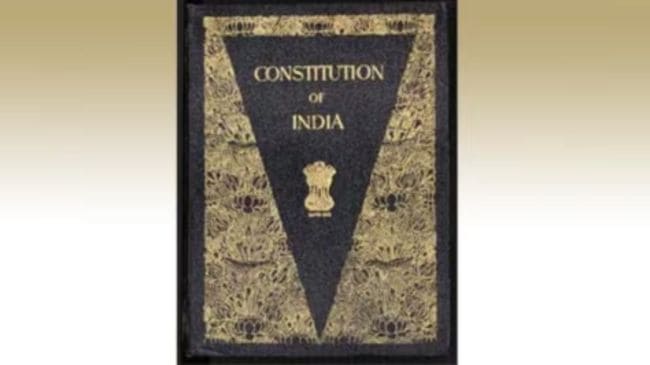Opinion Indian Constitution went beyond Western notions. This is why it has endured
Its makers were not bound by the limited imagination of Western liberal constitutionalism with its emphasis on state restriction, recognising instead that in society, groups and communities wielded power separate from the state.
 Indian Constitution-makers were not bound by the limited imagination of Western liberal constitutionalism with its emphasis on state restriction, recognising instead that in society, groups and communities wielded power separate from the state
Indian Constitution-makers were not bound by the limited imagination of Western liberal constitutionalism with its emphasis on state restriction, recognising instead that in society, groups and communities wielded power separate from the state Today marks the 76th anniversary of the adoption of the Indian Constitution. Born amidst a bloody partition and transfer of power from colonial rule, it was ahead of its time. It departed in several respects from the Western constitutions that it is often charged with borrowing from. Constitutional rights in India incorporate, but also go beyond, the Western notion of the protection of individual civil and political liberties. These envisage state action to address inequities in social life and recognise group-differentiated rights.
First, the Indian Constitution asserts a right to equality and, unlike Western constitutions, also expands upon its implications in a deeply unequal society. Provisions such as Article 14 — equality before the law and the equal protection of laws for all persons — and Article 15 — prohibitions on discrimination by the state against citizens — marked a new departure. Unlike Western constitutions, its equality provisions identify societal sources of discrimination against individuals, particularly in relation to caste. Thus, under Article 15 (2), citizens are to be protected from discrimination not just from the state but also private citizens in their access to public spaces. Article 17 outlaws the practice of untouchability. Similarly, in response to conditions of debt bondage tied to caste and landlordism, Article 23 prohibits human trafficking and forced labour. Indian Constitution-makers were thus not bound by Western liberal constitutionalism, with its emphasis on state restriction, recognising instead that in society, groups and communities wielded power separate from the state.
Second, the Constitution recognised group-differentiated rights within a broadly egalitarian liberal framework, decades before these were admitted in Western liberal democracies. Heated debates ensued in the Constituent Assembly over protections for religious minorities and historically marginalised groups, which came to be reduced somewhat from the first to the final draft of the Constitution. Notably, legislative quotas for religious minorities were withdrawn in 1949. Nevertheless, at the behest of leaders like B R Ambedkar, the Constitution recognised that differential treatment was needed to address structural inequalities. India was a world leader in the constitutionalisation of affirmative action in 1950, a decade before the US’s advances in civil-rights legislation.
The Constitution adopted a nuanced approach to religious diversity. It established a secular state (although the term itself was introduced in 1976), eschewing special status for any religion, prohibiting compulsory taxation for any religion (Article 27), and prohibiting compulsory religious instruction in state-funded educational institutions (Article 28). It offered protections for religious freedoms in the case of individuals (Article 25), as well as groups (Article 26). Minorities such as Muslims, Christians, and Parsis retained their religious family laws. Articles 29 and 30 further guaranteed religious and linguistic minorities the right to preserve their language, script, and culture, and to establish and administer educational institutions.
The Constitution’s approach is not without flaws. Protections for individual freedoms and pluralism remained partial, with rights and remedies limited in a range of circumstances, including through emergency provisions carrying over colonial laws. With the exceptions and suspensions of rights to be determined by the government of the day, albeit with the possibility of judicial review, the Constitution created a powerful executive with wide discretionary powers.
Even so, that the Constitution has survived as the normative standard for a colossal, diverse polity for over 75 years, and remains a beacon of hope for its marginalised, is an achievement in global terms. It reminds us that constitutions are not only legal texts but powerful narratives of national aspiration and belonging, that national unity does not require uniformity, and that equality does not require the same treatment in contexts of deep inequality and social difference.
Bajpai is professor of Politics, SOAS, University of London and Raturi is associate professor,O P Jindal Global University





